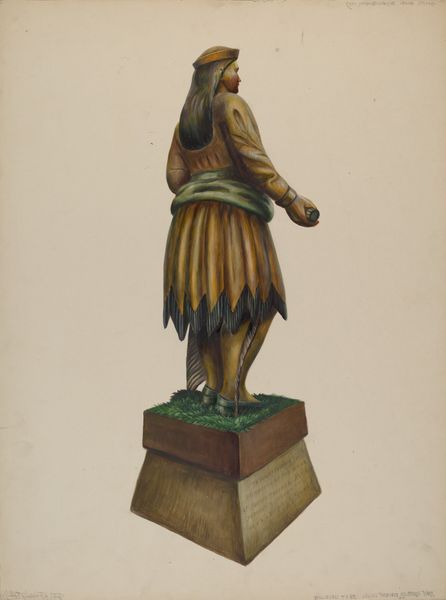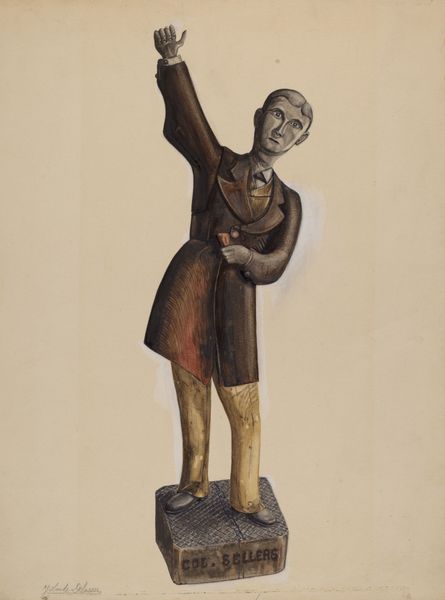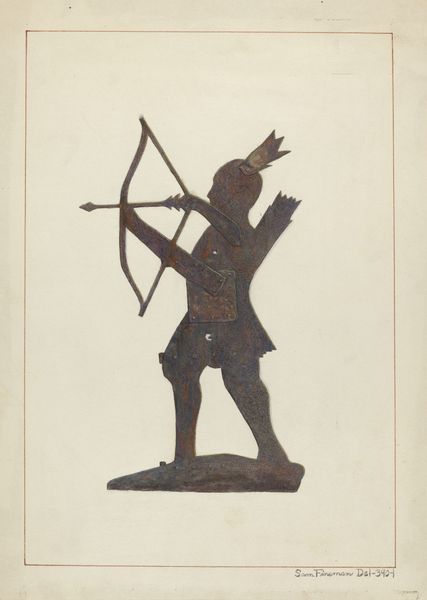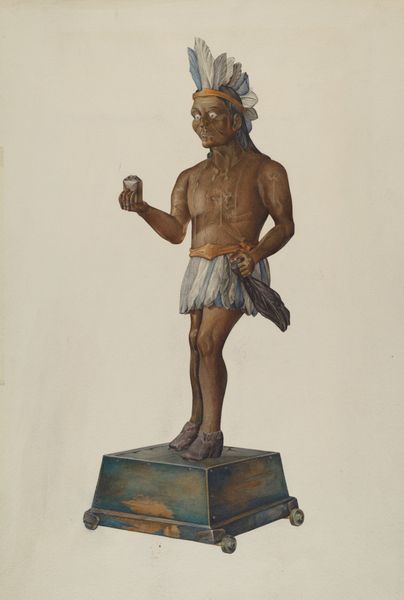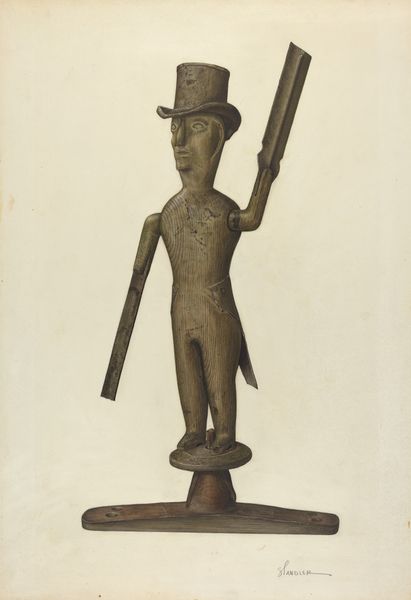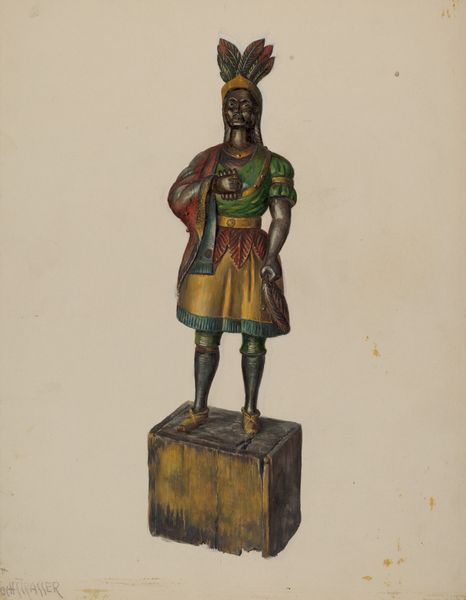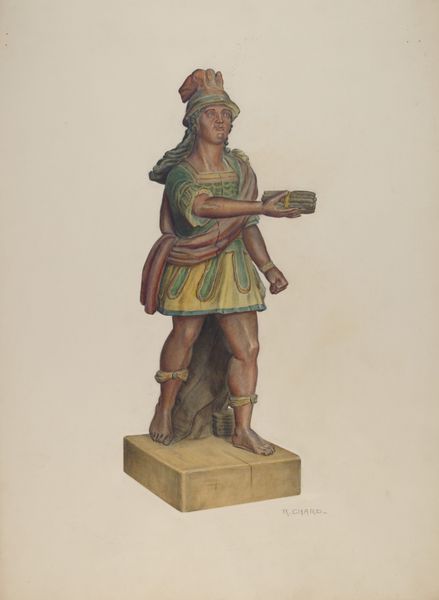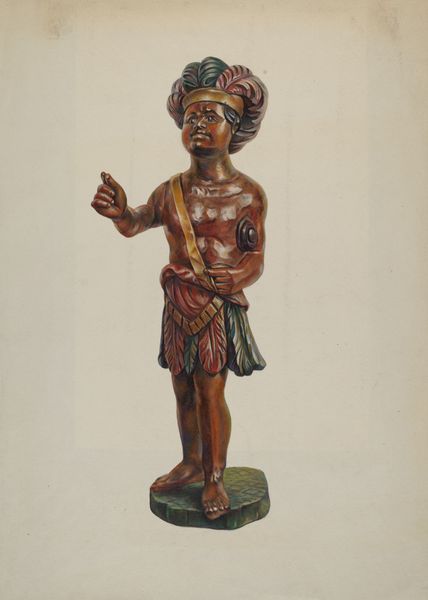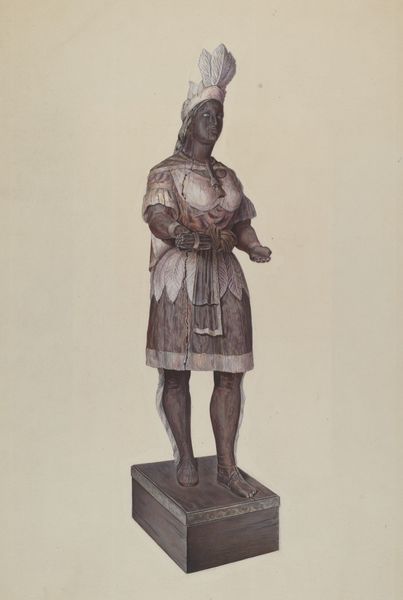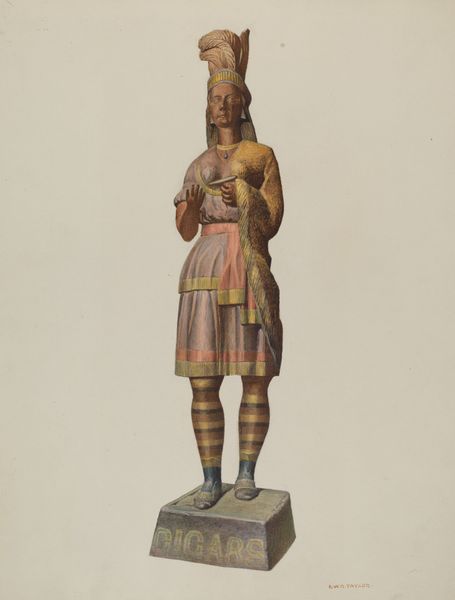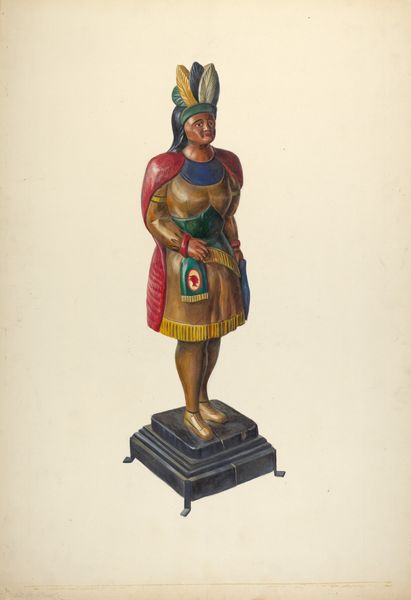
metal, sculpture
#
metal
#
figuration
#
sculpture
Dimensions: overall: 51.4 x 35.2 cm (20 1/4 x 13 7/8 in.) Original IAD Object: 30 1/2" high
Copyright: National Gallery of Art: CC0 1.0
Curator: Right, let's turn our attention to this compelling "Metal Indian Weather Vane," believed to date back to around 1940. As a piece of Indigenous Americas art, it exists as both sculpture and, potentially, a found object. Editor: My first thought? Defiance. There's a strange stoicism to this figure perched on that tiny ball, one arm reaching out… almost daring the wind to blow him off course. It's visually quite striking, this tension between stability and precariousness. Curator: Precisely! The weather vane has long existed as a charged object in the landscape. Often perched atop barns or public buildings, the imagery chosen frequently reflected societal power dynamics. A figure representing indigenous people turns the winds visible and in this way can symbolize the natural world more generally. The work offers potent reflections on who has a "rightful" place in that landscape. Editor: It’s poignant, isn’t it? The oxidation of the metal suggests age, perhaps wear and tear. I wonder what winds it weathered, what storms it predicted? The way the metal patinas, it almost makes him look as though he is crying green tears of rust... and all of a sudden it no longer speaks of only weather. I wonder what place does this work give us? Curator: And its presence in a museum, of course, further complicates the narrative. Display transforms the piece, inviting viewers to engage critically. I wonder what those looking at it in the 1940s thought compared to those that look now? Its cultural function becomes almost doubled. Editor: It certainly does make one think... think about cultural displacement, appropriation... and how those themes continue to blow in the winds of our contemporary moment, just like the weather itself. There is no true place or ground. Curator: Exactly. Thank you for that intuitive reading, it really makes you look. The role of this sculpture challenges, rather it is in the public sphere or enclosed in an exhibition setting! Editor: Always a pleasure to look! Thank you.
Comments
No comments
Be the first to comment and join the conversation on the ultimate creative platform.

